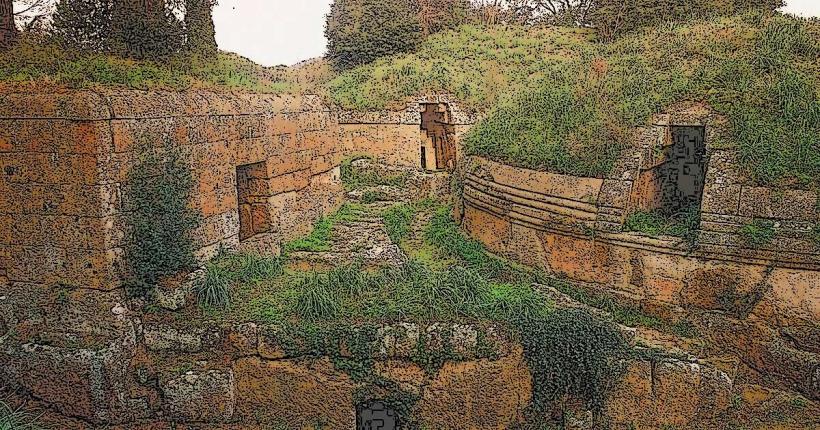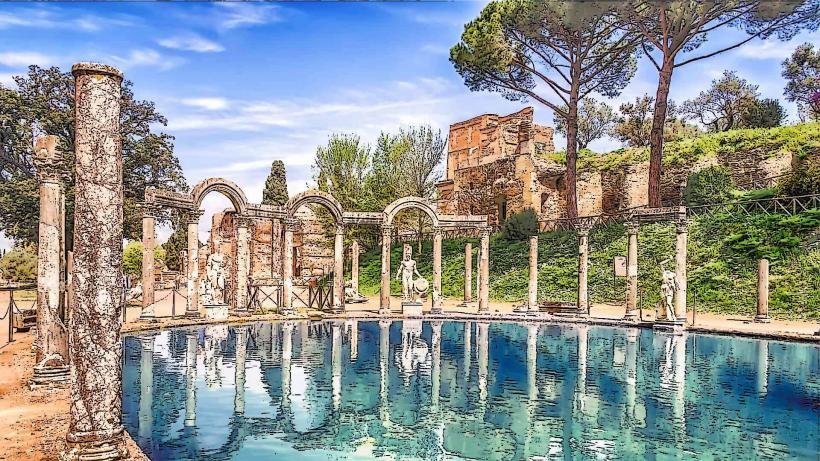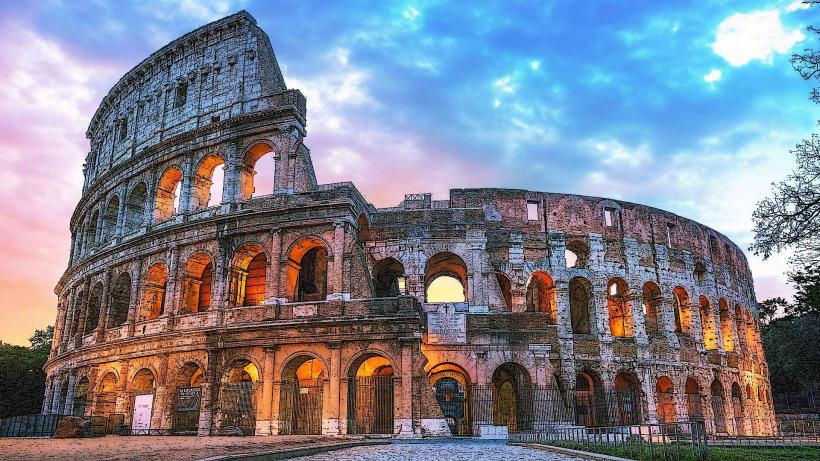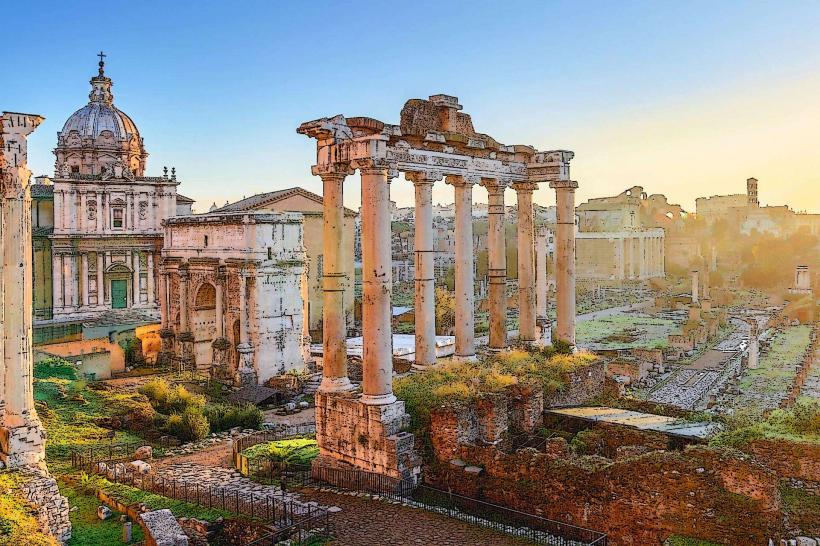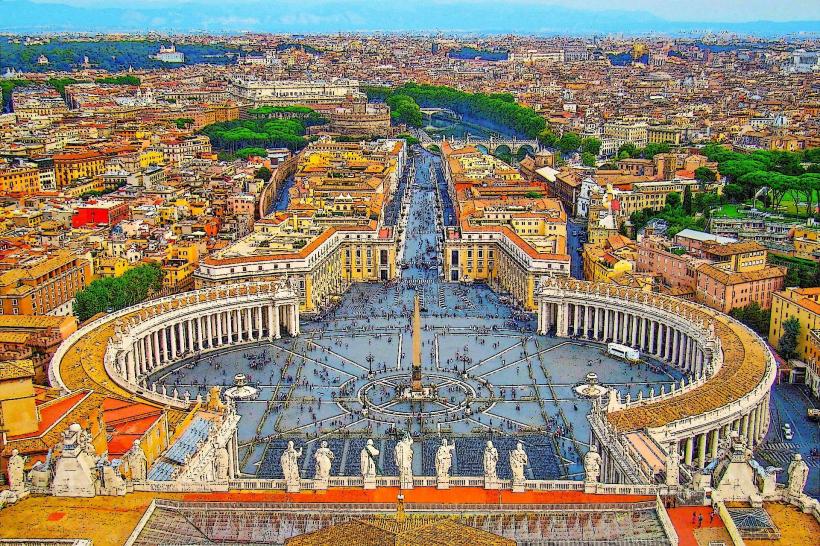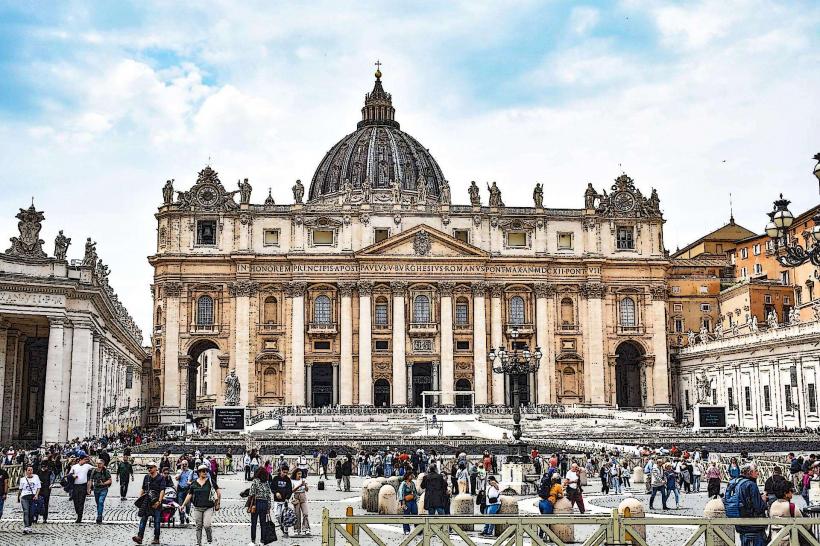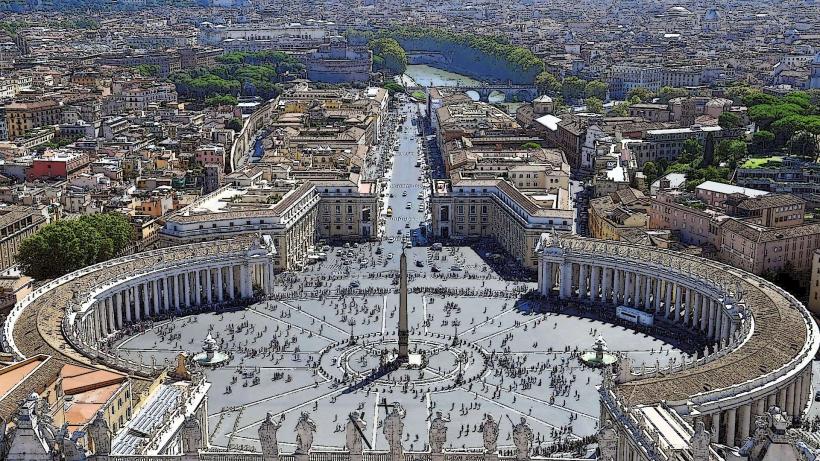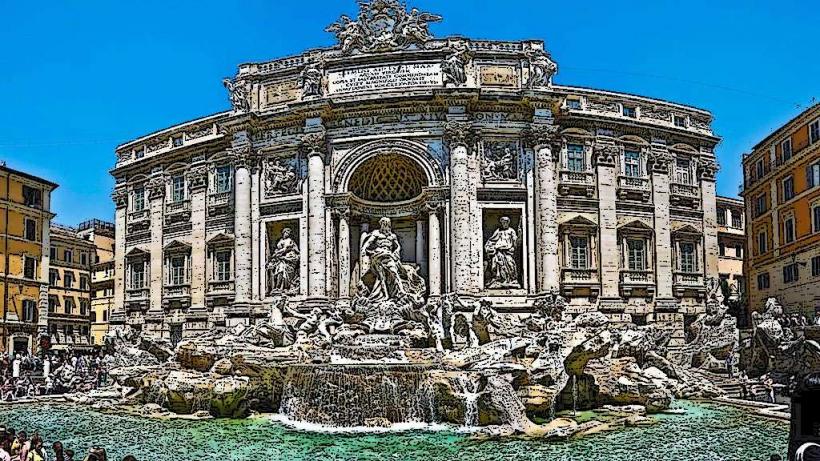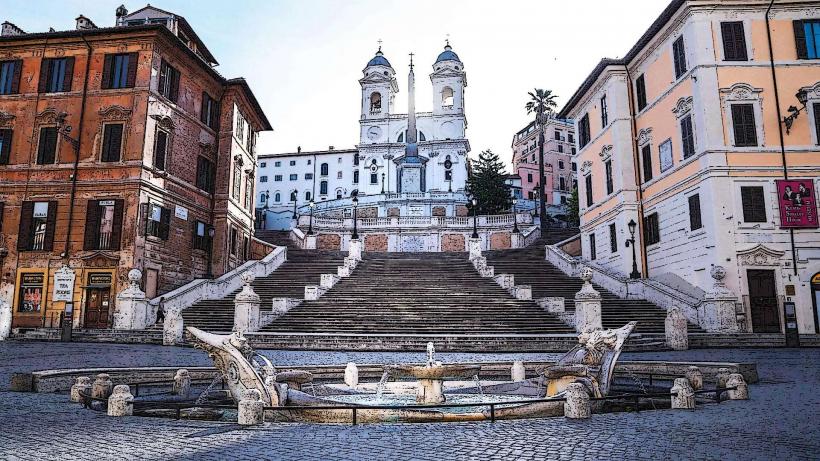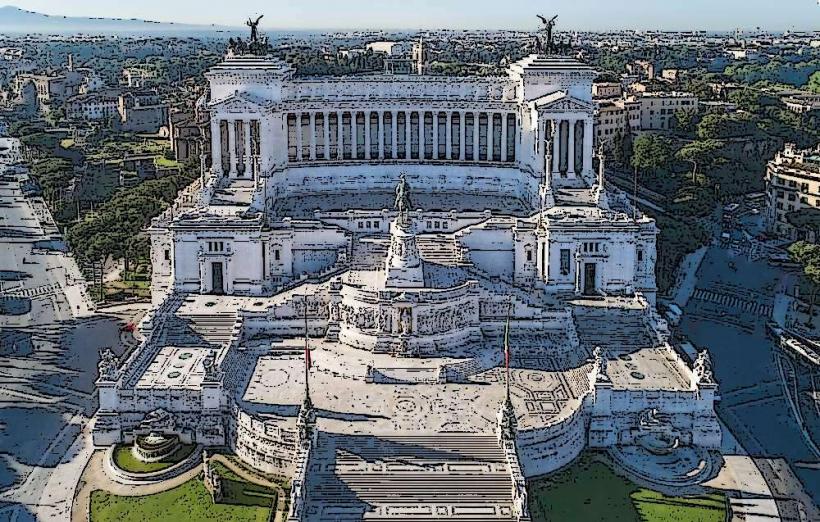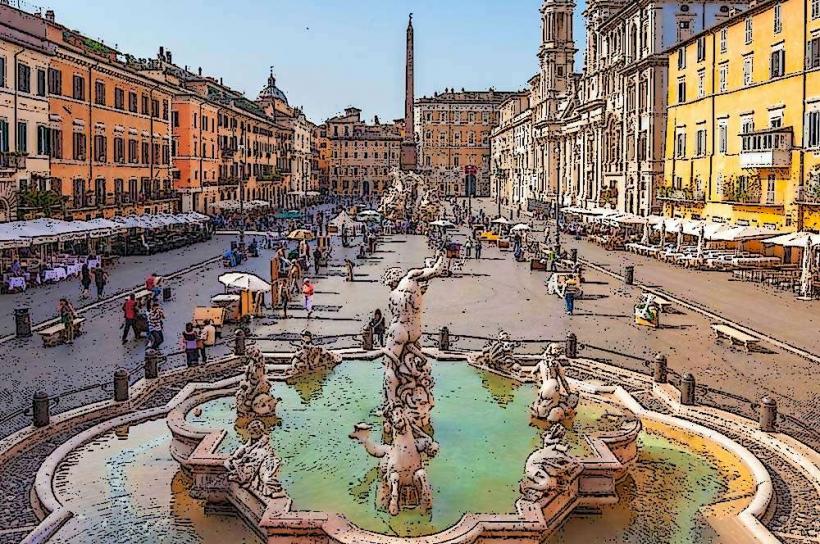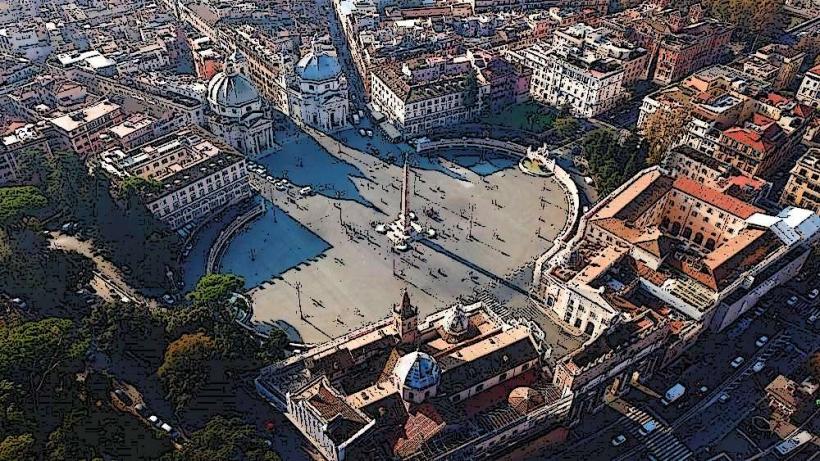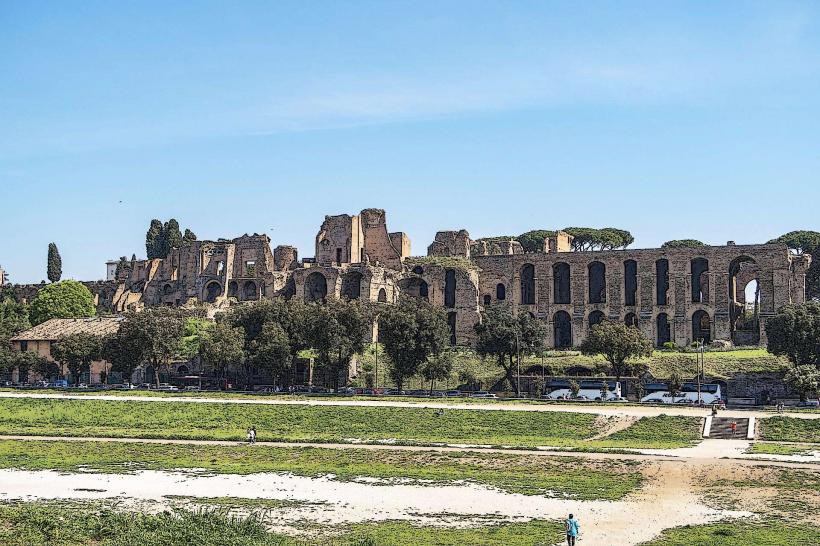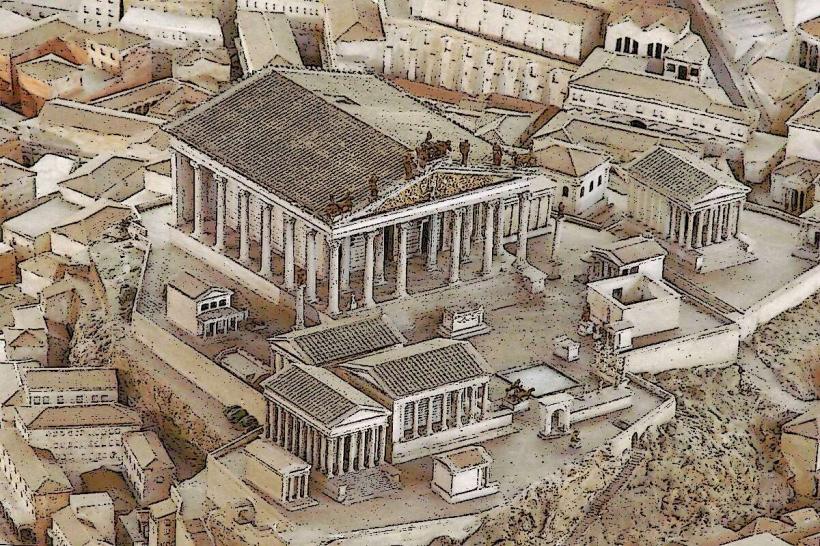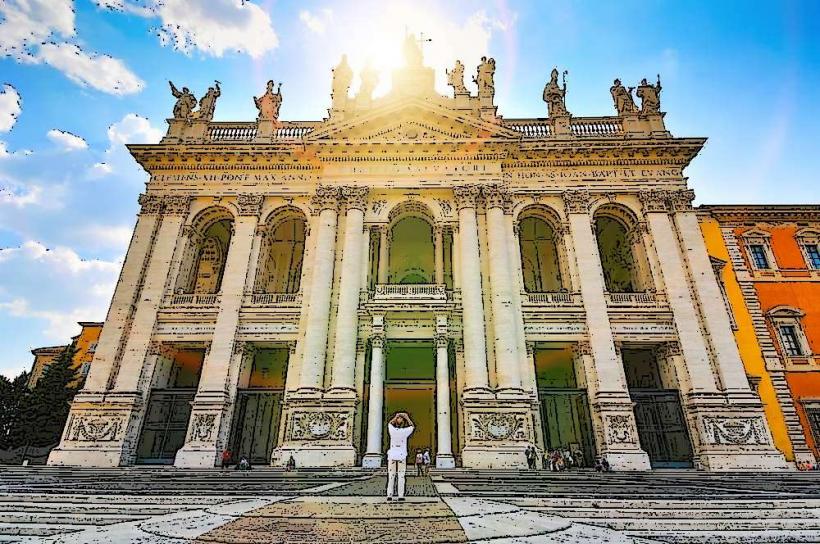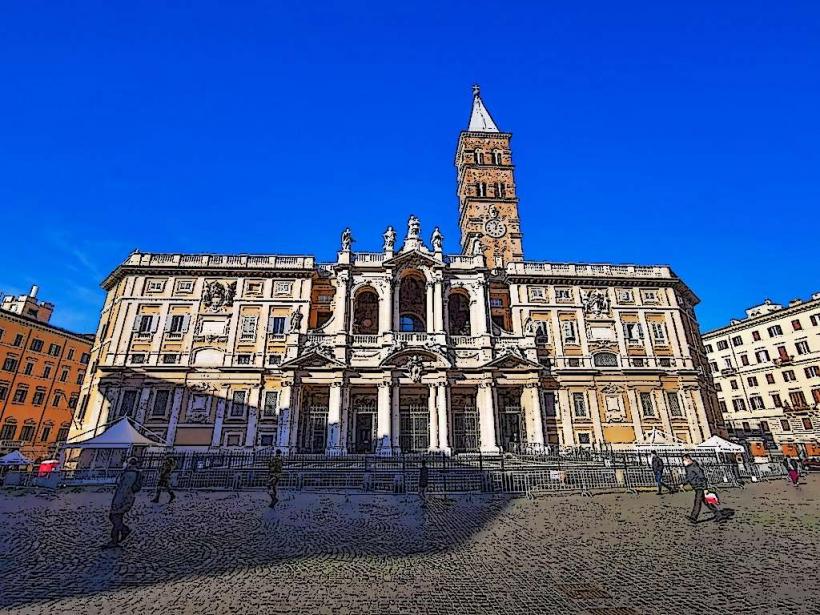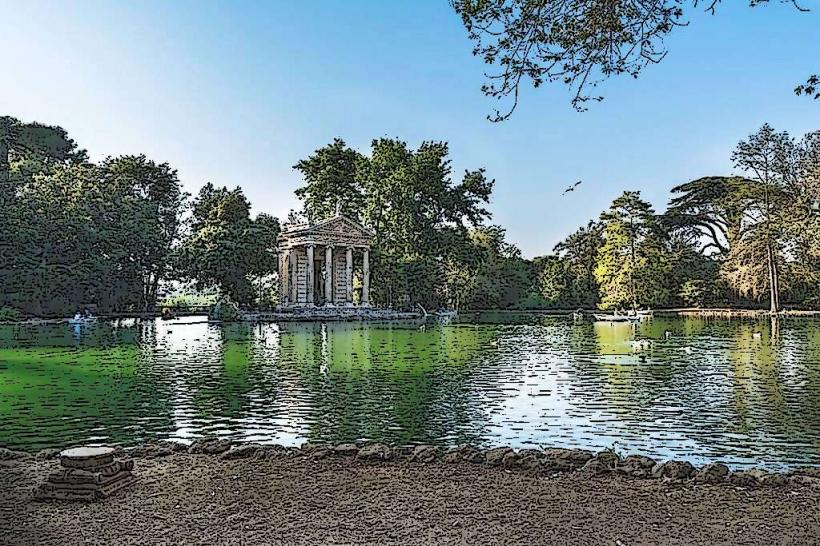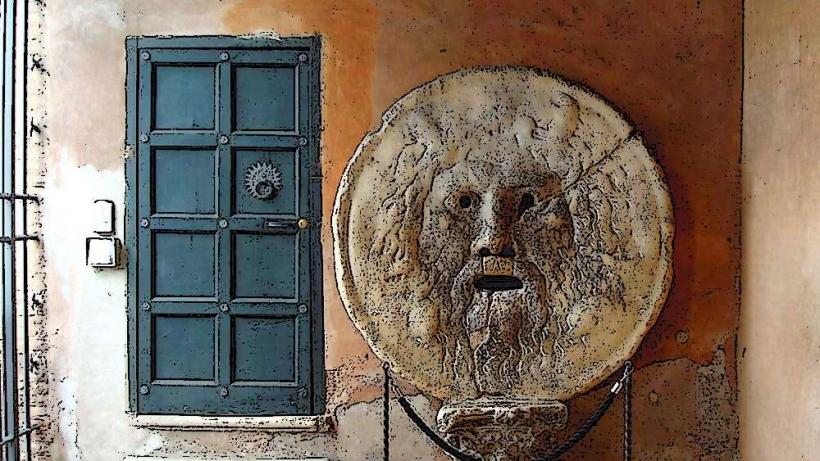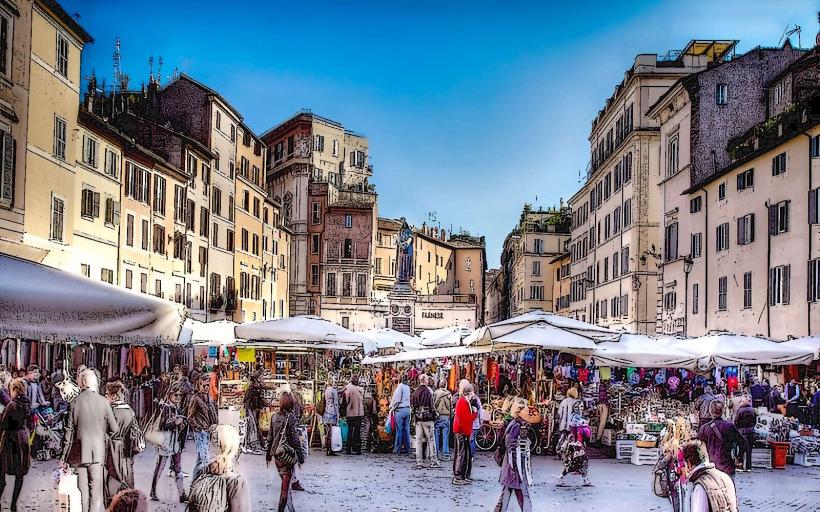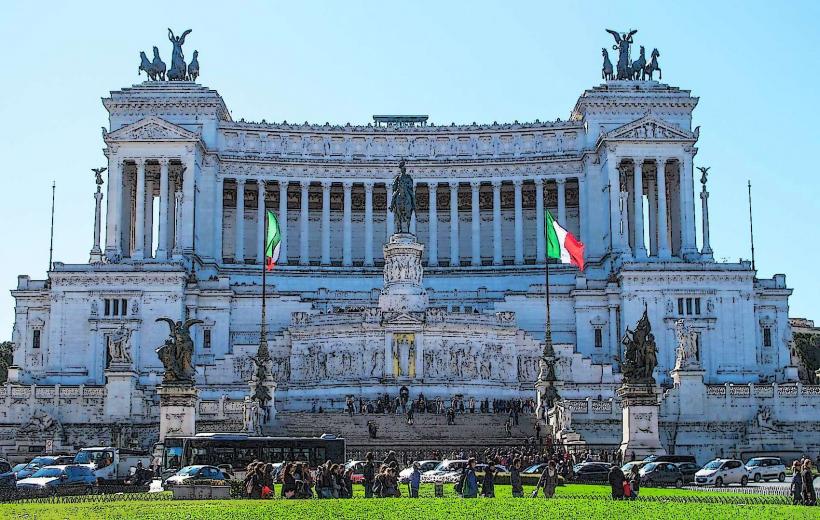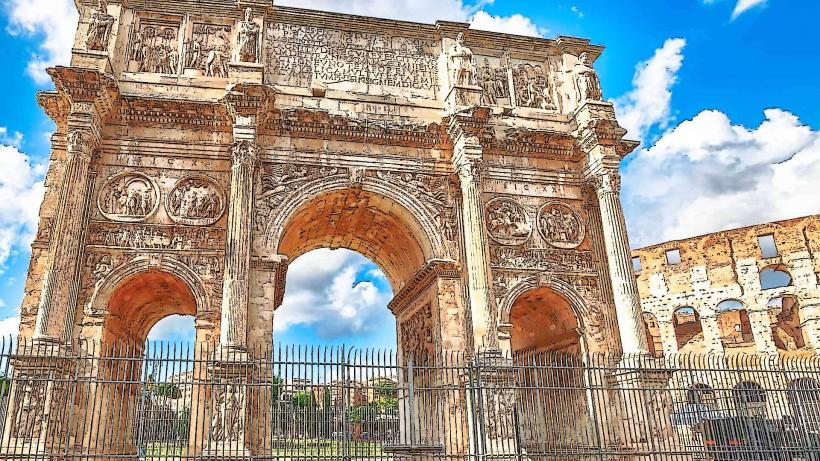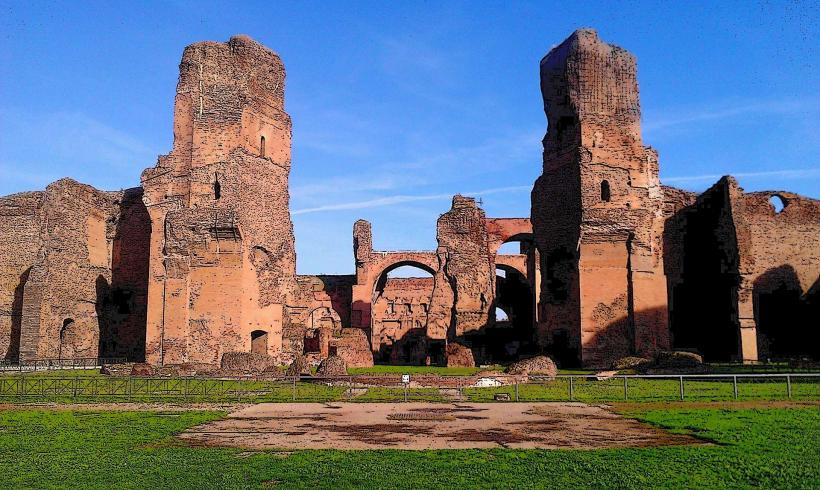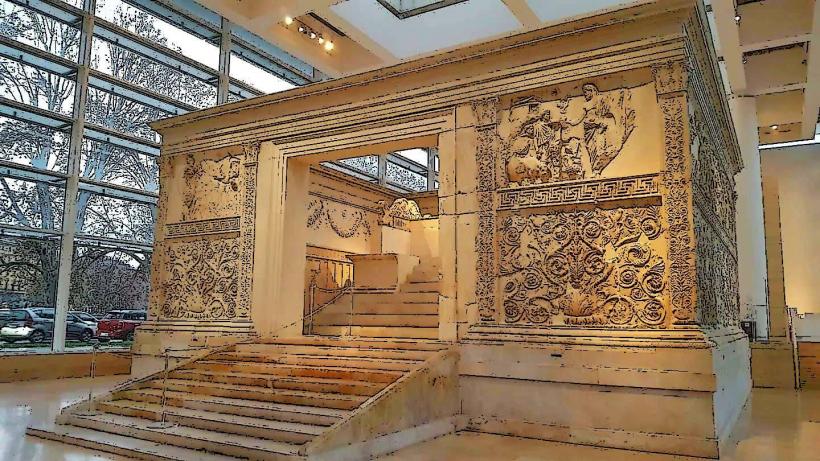Information
Landmark: Castel Sant AngeloCity: Rome
Country: Italy
Continent: Europe
Castel Sant'Angelo, also known as the Mausoleum of Hadrian, is one of the most iconic landmarks in Rome, Italy. It is a monumental fortress with a rich history, offering visitors a glimpse into ancient Roman history, medieval warfare, and Renaissance art. Over the centuries, it has served various purposes, from a mausoleum to a military stronghold and even a papal residence. Today, it is a museum that attracts tourists from all over the world.
1. History and Origin
- Roman Mausoleum: Castel Sant'Angelo was originally built as the **mausoleum of the Roman Emperor Hadrian (reigned 117–138 AD). Construction began in 130 AD and was completed in 139 AD, shortly after Hadrian's death. The mausoleum was designed to be the final resting place for Hadrian and his family, and over the years, other emperors were also buried here. The structure was intended to reflect the imperial power and grandeur of the Roman Empire.
- Transformation into a Fortress: After the fall of the Roman Empire, the mausoleum was repurposed into a fortress by the Papal States in the 5th century. It was fortified and expanded, and over time, it became an important military stronghold. The fortress also served as a refuge for popes during times of conflict and unrest in Rome.
- Papal Residence and Prison: In the 13th century, Castel Sant'Angelo became part of the Vatican's defensive system and was connected to St. Peter's Basilica via a fortified corridor known as the Passetto di Borgo. This corridor allowed the pope to escape to the castle in times of danger. During the Renaissance, it also became a residence for the pope, and some popes even used it as a prison for political enemies.
2. Architectural Features
- Design and Structure: The castle's circular design is inspired by the ancient Roman mausoleums. The central part of the building is a large cylindrical drum, topped with a statue of the Archangel Michael, from which the castle gets its name, "Castel Sant'Angelo" (Castle of the Holy Angel). The statue is a symbol of divine protection, and the archangel is said to have appeared during a plague in Rome, signaling its end.
- Fortifications: Over time, the mausoleum was transformed into a fortress, with defensive walls and towers added. The exterior is marked by large, thick walls and a moat, and the top of the castle offers breathtaking views of Rome.
- Bridge of Angels: The castle is linked to the city center by the Ponte Sant'Angelo (Bridge of Angels), a beautiful bridge adorned with statues of angels designed by Gian Lorenzo Bernini. The bridge leads visitors directly to the entrance of the castle, offering a stunning view of the structure as they approach.
- Interior: Inside the castle, visitors can explore multiple levels, including the mausoleum's burial chamber, which originally held Hadrian’s tomb, and the papal apartments, which were later added. The castle is a labyrinth of rooms, passageways, and terraces, each with historical significance.
- Terraces: On the roof of the castle, there is an open terrace that offers spectacular panoramic views of the Vatican, St. Peter's Basilica, the Tiber River, and much of central Rome. The view from here is one of the best in the city, and it is a popular spot for tourists to take photographs.
3. Art and Museum
- Museum: Today, Castel Sant'Angelo is a museum showcasing the history of the structure and its transformation over the centuries. The museum houses a collection of art, weapons, and historical artifacts, including sculptures, Renaissance paintings, and frescoes. Visitors can explore the Papal Apartments, which are decorated with works by famous artists, including Raphael and Perugino.
- Art Collections: The museum also displays a variety of artwork, particularly Baroque paintings, sculptures, and medieval armor. It offers insights into the art and culture of different periods in Rome's history.
- Papal Relics: One of the most important parts of the museum is the papal rooms, where visitors can see the remains of papal relics and artifacts used by popes during their time in the fortress.
4. The Archangel Michael Statue
- Symbolism: At the top of Castel Sant'Angelo, the statue of Archangel Michael is one of the castle’s defining features. The archangel is depicted with a sword raised, symbolizing the triumph of good over evil. The statue, which stands at 3.7 meters tall, was added in the 18th century by the sculptor Peter Anton von Verschaffelt. According to legend, the archangel appeared to Pope Gregory I in the 6th century, signaling the end of a plague that had been devastating Rome.
- Restoration: The original statue was replaced several times over the centuries, with the current version installed in 1753. The statue has become one of the iconic symbols of Rome and is one of the most photographed features of Castel Sant'Angelo.
5. Cultural Significance
- Historical Significance: Castel Sant'Angelo played a crucial role in the history of Rome and the Papacy, particularly during periods of conflict. The fortress’s strategic location allowed the popes to defend themselves against external threats, and its use as a papal residence made it a symbol of papal power during the Renaissance.
- Popular Culture: Castel Sant'Angelo has also appeared in literature and popular culture. It is featured in Dan Brown’s novel “Angels & Demons”, where it is depicted as an important location in the story. The castle's dramatic architecture and historical role in defending the papacy have made it a favorite setting for various films and TV shows.
6. Visiting Castel Sant'Angelo
- Access: Castel Sant'Angelo is located on the right bank of the Tiber River, near Vatican City. It is easily accessible from Piazza San Pietro (St. Peter's Square) and other central Rome landmarks. The Ponte Sant'Angelo bridge leads visitors directly to the entrance.
- Visitor Experience: A visit to Castel Sant'Angelo is a journey through Roman and papal history. The museum’s exhibits, the beautiful views from the roof, and the fascinating architecture make it a must-see destination for history buffs, art lovers, and anyone interested in the rich past of Rome.
- Best Time to Visit: Like many popular Roman landmarks, Castel Sant'Angelo can be crowded, particularly in the summer. To avoid the crowds, consider visiting early in the morning or later in the afternoon. It is also particularly beautiful at sunset when the views from the rooftop terrace are particularly stunning.
7. Fun Facts
- Name Origin: The name "Sant'Angelo" comes from the Archangel Michael. The original structure, however, was named the Mausoleum of Hadrian and only later acquired the Christian name after the archangel's association with the site.
- Prison: In the 19th century, the castle was used as a prison for political prisoners. Some famous figures were imprisoned there, including the painter and writer Giuseppe Mazzini.
- Papal Escape Route: The Passetto di Borgo is a secret passageway that connects Vatican City with Castel Sant'Angelo. This passage was used by popes as an escape route during times of political turmoil, including the infamous Sack of Rome in 1527.
Conclusion
Castel Sant'Angelo is a fascinating historical landmark that combines elements of ancient Roman architecture with the grandeur of the papal period. It stands as a symbol of the continuity of Rome’s history, offering a window into its military, religious, and artistic past. With its spectacular views, rich history, and role in both ancient and medieval Rome, the castle is a must-see destination for anyone visiting the Eternal City.

